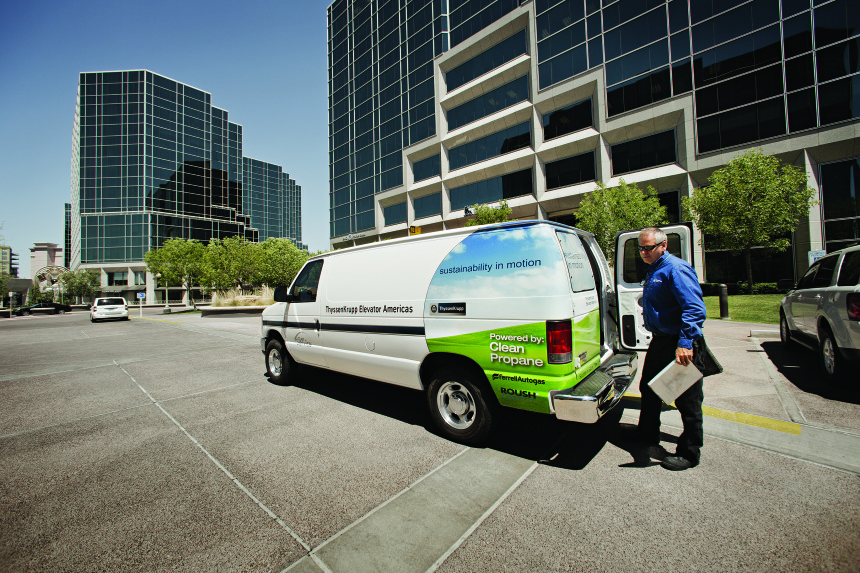Propane Conversions
Why should I convert to propane autogas?
To convert a vehicle to run on autogas, a new fuel tank, and propane injection system must be installed. Any gasoline engine can be converted to run on autogas, however, there are several variables that will affect exactly what type of conversion works best for your own driving habits.
Bi-Fuel vs. Dedicated Mono-Fuel System
A bi-fuel conversion means the vehicle can burn both gasoline and propane. This is the system most motorists opt for, as it allows you to harness all the benefits of propane autogas for most of your driving while maintaining the ability to use gasoline where autogas is not available. There is no modification to the existing gasoline fuel system with a bi-fuel conversion.
Likewise, a dedicated autogas conversion will allow the vehicle to run only on propane, maximizing cost savings. This is a great option for vehicles that run specific routes or within a service area where autogas is readily available.

Autogas isn’t just a cost-effective alternative to gasoline, it’s also a lot greener. In comparison to gasoline, burning autogas creates 12% less carbon dioxide, 20% less nitrogen oxide, 40% less smog-producing hydrocarbons, and 60% less carbon monoxide.
With substantially less carbon monoxide production, autogas is ideal for use in semi-enclosed spaces where gasoline vehicle use presents a substantially higher risk of carbon monoxide poisoning to people.

How Do I Know If Propane Is Right for My Fleet?
Will a propane conversion hurt my engine?
No. Burning propane in your engine should extend its life compared to burning gasoline. Propane burns cleaner than gasoline, so there are fewer impurities in the cylinder to cause wear and the engine oil stays cleaner and lasts longer. Most fleet managers report longer engine life on their propane-equipped vehicles versus gasoline.
Will a propane conversion void my warranty?
It depends on the vehicle, and the kit used. In most cases, it does not. If you are about to buy a new vehicle, please call us and we can advise about special options to select in order to make a propane conversion easier.
Where does the propane tank go?
Most conversion kits feature a tank specially designed to fit in a vehicle’s spare tire carrier location. If you don’t wish to sacrifice your spare tire room, extended range tanks of 50 to 80 gallons are available for mounting in truck beds or frame mounting on vehicles that have space available for it. For vehicles converted to a dedicated propane system, a propane tank can usually be fitted where the gasoline tank was previously.
Does my conversion have to be EPA Certified?
For newer vehicles, the conversion kit must be EPA certified to be legal to use in the United States. Older vehicles that are more than 10 years old or have over 120,000 miles are sometimes exempt from this rule, as they are considered “beyond useful life,” by the EPA. EPA-approved kits are available for most naturally aspirated engines used in fleet vehicles, SUVs, and some passenger cars.
Can I buy a propane vehicle from a dealer?
Yes! Ford, General Motors, Freightliner, and several other manufacturers offer vehicles that are converted to autogas after rolling off the assembly line by a Qualified Vehicle Modifier and have full warranty coverage and serviceability at the dealership they came from.
Is the conversion reversible? How much modification is done? Will my check engine light come on?
The ICOM propane conversion does not splice into the factory wiring harness or fuel system at all, and will not cause any warning lights to come on. The only wiring into the vehicle is to the battery and 1 wire to a spark plug for RPM monitoring.
Since holes must be drilled into the intake manifold for injector placement, (for a bi-fuel conversion) reversing a conversion may require installing a new intake manifold or plugging these holes in some other way.
A properly installed and tuned conversion should, in most cases, not cause any trouble for a vehicle’s onboard diagnostic systems or ECM/ECU.
